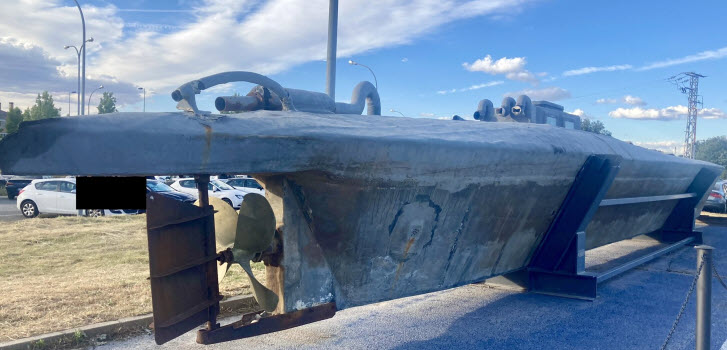A twenty-meter-long submarine built of fiberglass reveals Europe’s drug crisis.
The homemade submarine is the first “narco-submarine” known to have carried cocaine from South America to Europe.
Three men survived 27 long days and nights while crossing the Atlantic just below the surface of the raging waves.

It was cramped, claustrophobic, and incredibly primitive.
After looking at the ship, one can understand why a prospective skipper concluded that it was a death trap.
The heat and noise must have been enormous as the engine in the rear of the sub burned the 20,000 liters of fuel on board.
The crew, consisting of two Ecuadorian cousins and a former Spanish boxer, set out in the Brazilian rainforest and traveled first along the Amazon River.
They had energy bars, cans of sardines, and used plastic bags as toilets.
That was pretty much all they had.
Except, of course, for three tons of cocaine worth more than US$150 million.
But this was not a lucrative and covert mission.
The submarine’s voyage in late 2019 was tracked by law enforcement agencies, including the UK’s National Crime Agency (NCA).
After sinking their vessel near the Galician coast after running into trouble, the men were arrested and jailed.
This piece of history in the fight against international drug trafficking now stands as a trophy in the parking lot of the Spanish Police Academy in Ávila.
It is not a rotting relic of a past battle but a symbol of a secretly growing phenomenon.
Just last month, another submarine was discovered off the Spanish coast in the Galicia region.
“For more than 20 years, smugglers have been using submarines to get to Africa and Europe, but these two are the first we have seized,” explains Antonio Martinez Duarte, chief inspector of the Narco Brigade of the Spanish National Police.
“They are very difficult to detect,” he admits.
Hundreds of homemade submarines are now believed to have taken off for Europe, the largest cocaine market after the US, and is growing rapidly again after the Covid pandemic hit.
It is even said that in the middle of the Atlantic Ocean, around the Canary Islands and the Azores, there is a mass graveyard of cocaine submarines that were intentionally sunk after their cargo was successfully unloaded.
For the teams of mechanics who quietly tinkered with their ships in the depths of the South American jungle, especially in Guyana and Suriname, each covert mission was a great triumph.
Here in Spain, however, as part of the global war on drug trafficking, police at their Madrid headquarters are declaring a major victory.
“This is a very important operation,” says Chief Superintendent Duarte.
“It is the first time in Europe that we have found one and a half tons of cocaine paste.”
But it’s not just the size of the haul that’s significant.
“This operation also confirms the links between Colombian and Mexican criminals who have joined Spanish gangs operating in Spain,” says Chief Commissioner Duarte.
The importers receive US$30-35,000 for each package (1 kilogram).
They earn at least double that if they sell it on the street.
The only limit on profits is the extent to which they dilute their drug with extenders, which range from anesthetics (which mimic the physical sensations associated with cocaine, such as numbing the mouth) to cheaper options like caffeine and glucose.
But other options exist, such as deworming medications typically used by veterinarians.
According to the United Nations Drug Enforcement Administration, cocaine production increased by one-third between 2020 and 2021 – a record high and the largest year-over-year increase since 2016.
The port of Antwerp in Belgium is one place to witness the increase in drug supply firsthand.
In 2022, a record 110 tonnes of cocaine was seized – so much that there were not enough incinerators available to destroy it quickly enough.
It is estimated that only 10% of the cocaine arriving at the port is intercepted, with the rest going to the Netherlands for distribution to all parts of Europe, including the United Kingdom.
The head of customs at the port believes that with this tsunami of cocaine, the fight can never be won.
Given the money laundering and corruption – which today is rampant in terms of the sums that can be offered to dockworkers, police officers, and others – the fight seems hopeless.
The Belgian cocaine crisis is the European cocaine crisis.
The UN warns that the international gangs are working together as never before and, after their success on this continent, will soon fan out to Asia and Africa for unlimited wealth.

